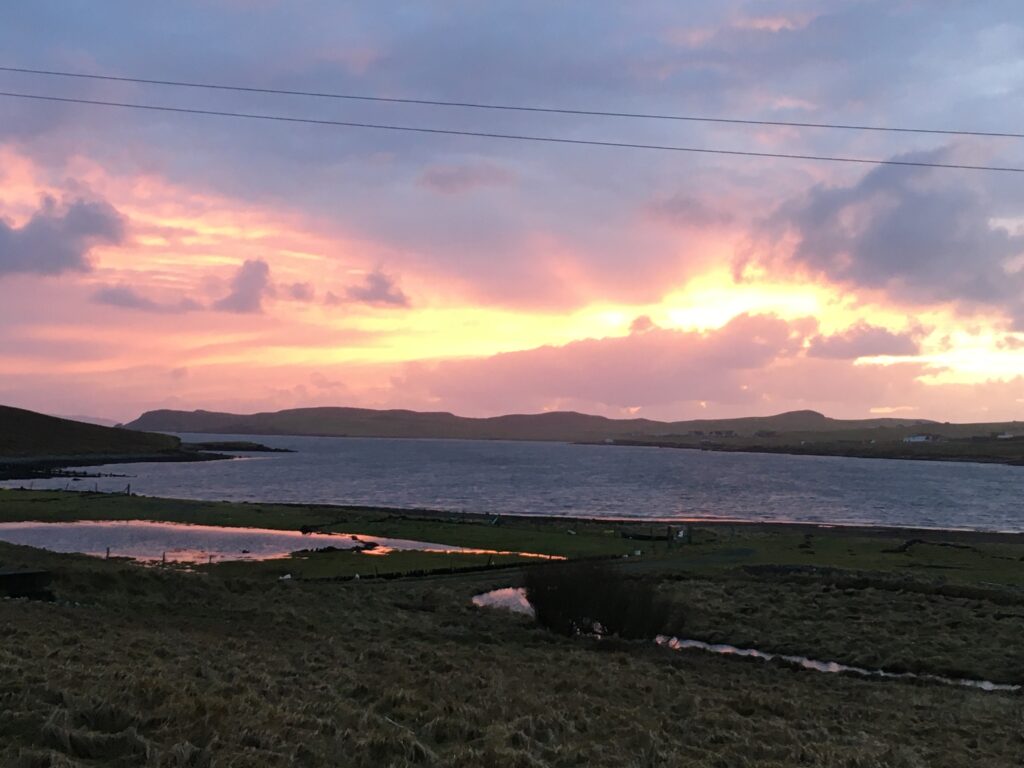
Dear Reader,
In my previous post, I wrote about the light within each of us. This week, I am focusing on the darkness within. We often think of our darkness, or our shadow, as scary. We see it as something to avoid. In reality, our darkness is just a part of being human, and holds the potential for our greatest transformation.
By darkness, I simply mean any aspect of our inner lives that is unseen.
Darkness is often used as a symbol for all the thoughts, beliefs, and feelings of which we are unaware. They are most often found in the unconscious, although elements of them can also be found in the body.
Think about this shadow side of yours.
If you have done inner work in the past, you may be familiar with shadow work. It is the process of trying to peer into that darkness, and bring to light (conscious awareness) aspects of yourself which you are currently unable to see.
We often fear what we can’t see. Once we see it, we can start to gain understanding. It becomes a little more familiar, and much less fearful. We can work with it. Maybe, if no longer needed, we can even let it go.
That is the basic premise of shadow work.
Why bother?
Sounds difficult, doesn’t it? How can you see what isn’t seen? How do you gain awareness of something you may not even know exists?!
It is doable. And I believe that shadow work is some of the most rewarding, empowering work you could ever do. Not only that, it can potentially lead to transformation and immense personal growth faster than almost any method I know.
I have done shadow work several times in my life, and grown immensely because of it. Sometimes, yes, it has been painful, but always with a reward from having done it that feels far better. What I find much worse is the slow, creeping pain of never doing the work at all.
Today, I will share two different ways of going within and uncovering the treasures hiding unseen in your darkness. But before I do, just consider for a moment. Isn’t it amazing that we human beings could have anything hidden in our minds that we don’t see or even know about?
I find that breathtaking.
But when you think about it, isn’t it really a natural design feature? Doesn’t it actually help us function in the world? Imagine if we were consciously aware of the entire contents of our mind, all the time. We would be in serious trouble! We would be constantly overwhelmed by all that we are trying to process on a daily basis.
Remember that perspective if you find the whole idea scary, which it certainly can be sometimes. Who really wants to know what’s lurking in there?!
I do.
Getting started
If you are wondering whether you would benefit from delving into your own darkness, I would say yes, you would. Whether you are new to shadow work, or are very familiar, there are great gifts waiting for you in the dark.
And if you are wondering how you could possibly see the unseen, there are always clues pointing you in the right direction.
Here are just a few:
- Look around at the details of your life. Are you getting the results you want? Are you happy, especially about the important things? If not, there is probably something holding you back, and that something very likely resides in your own unconscious mind.
- Look around at the people and circumstances that may trigger irrational fear, anger or discomfort in you. There is a possibility that they are simply mirroring back something unseen within you that creates great discomfort when challenged – because you don’t want to look at it.
- Look, too, at your dreams. Dreams often represent those unknown things within, that want you to see, hear, and ultimately befriend them.
So what are those two ways to see in the dark? Well, let me tell you a little story…
Use a flashlight
Growing up in a small, rickety house in the woods of rural Maine, our family developed a healthy respect for the elements. We had to be ready for anything, from freezing cold to blinding snow. Sometimes those conditions lead to power outages.
As a result, my father loved flashlights.
He had several; it seemed like he collected them. And a good flashlight was one of his favorite gifts to give me, even after I moved to New York City to become a dancer. I still have a few of them.
When Louise and I moved back to my childhood home for a period of time, I found some of his old flashlights – on the mantlepiece, in the closets, downstairs in the basement. They were all different shapes, sizes and styles. Most of them didn’t work.
I kept the ones that did work with new batteries, and even got a few more of my own. I bought a big, battery powered lantern, with a handle. Come winter, I discovered that I loved to take the lantern out at night, during a heavy snowstorm, and walk up our dirt road in a foot of new fallen snow, my way illuminated by that great glow.
But at some point, I realized that I was missing a lot by carrying a light.
Sure, I could see everything illuminated in its beam, but everything outside of the beam remained unseen. In fact the darkness seemed even darker, taking on a solid, impenetrable quality.
That’s when I took to turning off the lantern.
I would walk partway up the road, stop, and switch off that comforting beam. Standing in the dark, all my other senses kicked in. I could hear the hiss of falling snow in the trees around me, and the softer whisper of snow piling up around my feet. I could feel the wet flakes on my face.
And as my eyes adjusted, I could begin to see outlines of trees, power lines, snow-covered rocks, and the faint path of the road stretching on front of me. I realized that I could actually see more without the light than I could with it.
Over the course of the winter, I walked further and further without the light. Eventually, I only turned it on when I needed to see a specific area in front of me in order to walk safely.
And that is the power of a flashlight.
It is a directed beam. It focuses your vision, and allows you to see one small area very clearly. When I blew a fuse and needed to go under the house to replace it, I took a flashlight with a bright, pinpoint beam.
A lantern, while less directed, creates a bubble of light around you, that you can carry with you to be aware of your immediate surroundings.
What on earth does this mean for you?
Sometimes, when trying to see your own darkness within, you need a flashlight. The beauty is that your inner flashlight could take many different forms. It could be:
- a book, video or audio
- a teacher, guide, coach or therapist
- your own intuition
- a guiding question to point the way
All of these approaches can act as your flashlight, guiding you to illuminate something specific inside that may be holding you back from living your fullest, richest life. Notice that some of these approaches rely on the experience and knowledge of people who have already made the journey within and befriended the darkness. Other of these approaches rely on accessing your own experience and wisdom.
So yes, there are times when using a flashlight is called for. Maybe you are still unsettled by a difficult conversation with your boss, or a family member, but you can’t pinpoint why. You know roughly where in the darkness to shine that beam.
But there are other times when all you know is that you are procrastinating, again, on taking action in your life, and you have no idea why.
In this situation, a much different approach is called for, one I have already alluded to…
Just sit in the dark
A few years ago, when I was returning home to Maine after visiting Louise in Shetland, I arrived to discover a massive power outage from a storm that had just hammered the state. It was big; you can look it up and read plenty about it. Because our little rickety house is off in the woods, I was pretty sure that we would be without power.
We were.
For a week.
The storm hit just before Halloween, but fortunately the temperatures weren’t dropping as low at night as they can at that time of year. Most of the town was without power, but I was able to get food items that wouldn’t perish, and I slept under a mountain of blankets at night. In the morning, I would go to Dunkin Donuts or the local cafe, both of which had regained power quickly, to drink steaming hot coffee, charge my phone and use my laptop.
And so it went, for a week.
The very first day, when I picked up the car and drove home from the airport, I stopped and got a huge Italian sandwich along the way. Once home, and relieved to see that no trees had fallen on our house, I went back out for coffee, then came back, sat on the sofa in our living room, and ate my extra delicious sandwich while darkness fell.
As the light faded, I noticed my eyes adjusting. All of the familiar things in our living room – my childhood living room – took on a different appearance. I looked at the fireplace on the other side of the room, and experienced it in a whole new way. I perceived it differently, recalled different memories about it, and understood it differently. The same went for all the features of that old, familiar room.
That’s when I fully understood the power of sitting in the dark and letting your eyes adjust. You are able to see more, and differently, than you would have with an external light source like a flashlight, or even a candle.
I was so fascinated by my discovery that I let darkness fall completely that day, just observing and experiencing, without lighting any candles. And yes, the closets were full of those too, also collected by my parents over many years.
I repeated that little ritual every night for the rest of the week, eventually adding in the candles, because candles are cheery too, in their own way.
But I carried with me that new feeling of comfort and insight gained from really, truly befriending the dark.
It makes sense. Think of the beauty in just sitting and watching a sunset. The moments when the light fades, and you cross that line from light to dark, are magical.
What on earth does this mean for you?
Sometimes in your quest to illuminate the darkness within, you’ll find it most powerful to just sit with your darkness, let your sight adjust, and see what is revealed to you as different shapes come into focus.
It is a time for making peace with the darkness.
Notice the feelings and memories that are stirred. Notice how some familiar things may begin to look completely different. You may understand them differently. You may gain a whole new perspective.
There are different ways you could “sit in the dark.”
- meditation; one of the most powerful ways, especially in combination with inquiry.
- with intention; setting your focus on a particular portion of your life – say, birth through age ten – and sitting with relaxed awareness, waiting to see what comes forward, ready to note what significance it carries.
- engaging your shadow in dialogue. Much shadow work involves giving your shadow a name and character, which you can then consult without fear, and ask questions to provide you all kinds of information. There is a whole process, Active Imagination, developed by psychologists Carl Jung and later Robert Johnson, incorporating this approach.
As a fun exercise, before sitting with your shadow, you might try literally sitting in the dark first. Try it in your own living room for a few minutes at a time. As you feel more comfortable, you can sit for longer. You can even change your surroundings and sit outside, whether in your own back yard, a field or a forest.
The reward
Whether you use a flashlight, just sit in the dark, or use both approaches, depending on the time and circumstances, here is what you are trying to accomplish:
- find out what’s in those dark spaces within you
- become familiar and comfortable with it; befriend it
- let go of what no longer serves you (because your shadow is only trying to help, after all, and keep you safe; ask your shadow character, it will tell you so!)
- gain insight, in order to let go of what you no longer need and retain whatever will support you on your journey. You can integrate the insights and strengths you discover into your conscious awareness.
- go forward and live your life, with a greater sense of freedom and ease!
The rewards can be great. Think about the lightness of traveling through life without carrying unseen burdens and limitations. Think too, about the feeling of bringing your greatest strengths into the light, befriending them, and applying them fearlessly in your life.
An important note:
Don’t assume that everything in your unconscious is what you might consider “negative.” We each have what some teachers, including Caroline Myss and Andrew Harvey, call the “golden shadow.” It contains great strengths and gifts that we may have suppressed over the years, or that remain hidden for a variety of other reasons.
Sometimes our hidden gifts scare us the most! If we uncover our hidden gold, we then have to take responsibility for it and use it – or consciously turn our backs on it, which would be painful indeed.
A second important note:
Remember, you decide when and how deeply to explore your shadow. What do you feel ready for? Don’t hesitate to start small and go slow.
If you feel called to the idea of befriending your shadow, or perhaps excited by it even if a little nervous, check in now. Do you want insight about something specific? Get your flashlight ready and go for it!
Does it feel more like it’s time to sit with the darkness, let your vision adjust, and get to know your shadow? Go ahead; get comfy and give it a try.
Or, maybe now is the time to let your shadow be for a while, and just do some living.That’s valid too.
Your unconscious may contain all kinds of hidden thoughts, patterned beliefs and feelings. Most of them are manageable, helpful, and incredibly liberating to discover. But some of them may be scary. If you begin exploring your shadow and find yourself feeling overwhelmed, or have a hard time controlling your emotions when they come up, I suggest that you stop and consult a therapist or other health care professional (one of those flashlight approaches I mentioned earlier) before going further.
Everyone has the ability and the right to safely explore their own shadow. But if you have experienced intense trauma in your life, or potentially have a condition that may temporarily compromise your cognitive functioning, I again recommend checking in with a professional. They can guide you until you are far enough along to feel safe and continue on your own, or transition to some other kind of coach or mentor.
Whatever feels right for you as your next step, remember that you are a being of light and dark; that both are beautiful, powerful, and able to move mountains; and always, underneath both, is the pure oneness uniting us all.
If you have any questions about exploring your shadow, or are curious about support in the form of teaching or mentoring, please don’t hesitate to get in touch.
I honor your loving heart,
John



Leave a Reply